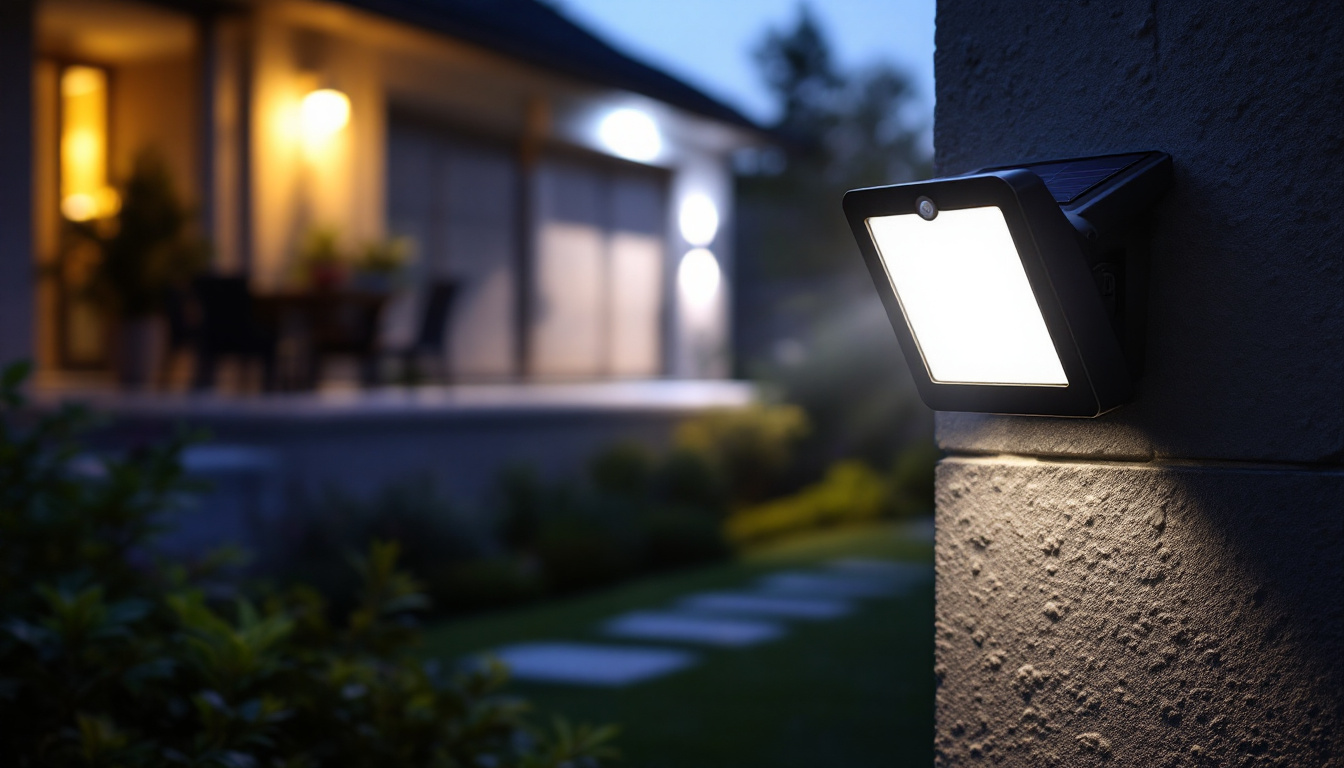
Wall pack lighting is an essential component in the realm of outdoor illumination, particularly for commercial and industrial applications. These fixtures not only enhance security but also improve visibility around buildings and parking lots. However, improper installation or selection can lead to a range of issues, from inadequate lighting to increased energy costs. This guide aims to provide lighting contractors with insights into avoiding common pitfalls associated with wall pack lighting.
Before delving into the potential pitfalls, it is crucial to understand what wall pack lighting entails. These fixtures are typically mounted on exterior walls and are designed to provide broad illumination in outdoor spaces. They come in various styles, sizes, and light sources, including LED, fluorescent, and HID options.
Wall pack lights can be categorized into several types based on their design and functionality. Traditional wall packs are often made of metal and are designed for durability and longevity. LED wall packs, on the other hand, are gaining popularity due to their energy efficiency and lower maintenance costs.
Some wall packs are equipped with features such as motion sensors or photocells, allowing them to operate only when needed. Understanding these variations is essential for selecting the right fixture for specific applications. For instance, a wall pack with a motion sensor can significantly reduce energy consumption in areas with low foot traffic, while a standard fixture may be more suitable for high-traffic zones that require constant illumination.
Wall pack lighting is commonly used in various settings, including commercial properties, parking lots, and security applications. They are particularly effective in illuminating entryways, loading docks, and outdoor pathways. By providing consistent and reliable lighting, wall packs enhance safety and deter criminal activity.
In addition to security, these fixtures can also contribute to the aesthetic appeal of a property. Choosing the right design and placement can significantly enhance the overall look of a building while serving its functional purpose. For example, decorative wall packs can add a touch of elegance to a restaurant’s outdoor dining area, creating a welcoming atmosphere for patrons. Moreover, the color temperature of the light emitted can influence the mood of a space; warmer tones may evoke a cozy ambiance, while cooler tones can provide a more modern and vibrant feel.
Furthermore, wall pack lighting can be integrated with smart technology to create a more efficient lighting system. By utilizing smart controls, property managers can adjust the brightness based on the time of day or occupancy levels, ensuring that energy is used effectively. This not only leads to cost savings but also aligns with sustainable practices, making wall pack lighting a versatile choice for environmentally conscious businesses.
While wall pack lighting offers numerous benefits, several pitfalls can arise during the selection and installation process. Awareness of these issues can help contractors avoid costly mistakes and ensure optimal performance.
One of the most significant pitfalls is the failure to provide adequate lighting levels. Insufficient illumination can lead to safety hazards and diminished visibility. It is essential to assess the specific lighting requirements of the area being illuminated, taking into account factors such as height, spacing, and fixture output.
Contractors should conduct a thorough photometric analysis to determine the appropriate number of fixtures and their placement. This analysis will help ensure that light levels meet local codes and safety standards, ultimately enhancing the effectiveness of the lighting system. Furthermore, it is beneficial to consider the type of activities that will take place in the illuminated area. For instance, areas with high foot traffic, such as parking lots or building entrances, may require higher lumen output to ensure safety and security during nighttime hours.
Another common mistake is improper fixture placement. Wall packs should be installed at an appropriate height and angle to maximize their effectiveness. Fixtures that are too low may create glare, while those mounted too high may not provide sufficient coverage.
Additionally, the orientation of the fixtures is crucial. For example, lights aimed directly at pedestrian pathways can create discomfort and reduce visibility. Taking the time to plan fixture placement carefully can prevent these issues and improve overall lighting quality. It is also important to consider the surrounding environment, such as nearby trees or buildings that may obstruct light distribution. By evaluating these external factors, contractors can optimize the lighting layout to enhance both safety and aesthetics, creating a well-lit environment that is inviting and functional.
The choice of light source is a critical factor in wall pack lighting. Each type of bulb has its advantages and disadvantages, and understanding these can help contractors make informed decisions.
LEDs have become the preferred choice for many applications due to their energy efficiency and longevity. They consume significantly less energy than traditional incandescent or fluorescent bulbs, resulting in lower operating costs.
However, it is essential to consider the color temperature and lumen output of LED fixtures. A cooler color temperature may be more suitable for security applications, while warmer tones can create a more inviting atmosphere. Balancing these factors is crucial for achieving the desired effect. Additionally, the directional nature of LED lighting allows for more precise illumination, reducing light pollution and enhancing visibility in targeted areas. This feature is particularly beneficial in commercial settings where safety and security are paramount, as it ensures that light is cast where it is needed most.
Energy efficiency is not just about choosing the right bulb; it also involves understanding the overall system design. This includes considering the wattage of the fixtures, the layout of the lighting, and the potential for using controls such as timers or dimmers.
Contractors should also be aware of local energy codes and incentives for energy-efficient lighting solutions. By staying informed, they can help clients save money while also contributing to sustainability efforts. Furthermore, integrating smart lighting technologies can enhance energy savings even further. For instance, motion sensors can automatically turn lights on and off based on occupancy, ensuring that energy is not wasted in unoccupied areas. This level of automation not only optimizes energy use but also extends the lifespan of the lighting fixtures, making it a win-win for both the environment and the client’s budget.
Proper installation is key to ensuring the long-term performance of wall pack lighting. Following best practices can help avoid many common pitfalls associated with these fixtures.
When installing wall pack lights, it is essential to adhere to electrical codes and safety standards. This includes ensuring that the wiring is suitable for outdoor use and protected from moisture and other environmental factors.
Additionally, contractors should consider the load on the circuit. Overloading can lead to circuit failures and may pose safety hazards. Properly sizing the circuit and using appropriate breakers can help mitigate these risks.
Wall packs are exposed to various weather conditions, making weatherproofing a critical consideration. Selecting fixtures with appropriate IP ratings can help ensure they withstand rain, snow, and extreme temperatures.
Regular maintenance is also vital for the longevity of wall pack lighting. This includes cleaning the fixtures to prevent dirt buildup and checking for any signs of wear or damage. Establishing a maintenance schedule can help ensure that the lighting remains effective over time.
Compliance with local regulations and safety standards is essential in any lighting project. Wall pack lighting must meet specific requirements to ensure safety and performance.
Each municipality may have different codes regarding outdoor lighting, including restrictions on brightness, glare, and light trespass. Familiarizing oneself with these regulations is crucial for avoiding fines and ensuring that installations are compliant.
Contractors should also be aware of any zoning laws that may affect the placement and type of lighting used. Consulting with local authorities can provide clarity and help navigate these regulations effectively.
In addition to local codes, wall pack fixtures should meet safety standards set by organizations such as Underwriters Laboratories (UL) or the American National Standards Institute (ANSI). These certifications ensure that the products are safe for use and have been tested for performance.
Contractors should prioritize using products from reputable manufacturers that adhere to these standards. This not only enhances safety but also builds trust with clients.
The lighting industry is continually evolving, and staying informed about emerging trends can help contractors remain competitive. Understanding these trends can lead to better product selection and installation practices.
Smart lighting technology is gaining traction in the wall pack market. These systems allow for remote control and monitoring, enabling contractors to offer clients enhanced functionality and energy savings.
Integrating smart technology can also improve maintenance by providing real-time data on fixture performance and energy usage. This information can help contractors identify potential issues before they become significant problems.
As sustainability becomes increasingly important, contractors should consider environmentally friendly options for wall pack lighting. This includes selecting fixtures made from recyclable materials and promoting energy-efficient solutions.
Additionally, educating clients on the benefits of sustainable lighting can enhance their overall satisfaction and contribute to a greener future.
Wall pack lighting plays a vital role in enhancing safety and visibility in outdoor spaces. By understanding the common pitfalls and implementing best practices, lighting contractors can ensure successful installations that meet client needs and regulatory requirements.
From choosing the right fixtures to adhering to safety standards, each step in the process is crucial for achieving optimal results. Staying informed about industry trends and advancements will further enhance the quality of service provided to clients, ultimately leading to long-term success in the lighting industry.
Ready to elevate your lighting installations with the best in spec-grade solutions? Look no further than LumenWholesale for all your wall pack lighting needs. Our commitment to quality and affordability ensures that you can provide your clients with reliable, high-performance lighting without breaking the bank. Take advantage of our wholesale prices, free shipping, and extensive selection to make your next project shine. Choose LumenWholesale for the perfect blend of quality, affordability, and convenience, and light up your work with confidence.

Explore the evolving landscape of Type G incandescent bulbs and discover why staying informed is crucial for lighting contractors.

Discover how solar motion sensor flood lights are revolutionizing the work of lighting contractors by offering energy efficiency, easy installation, and enhanced security.

Discover the insider tips from lighting contractors on mastering motion sensor security lighting.

Discover essential insights into Dusk Till Dawn outdoor lighting with this comprehensive guide tailored for lighting contractors.